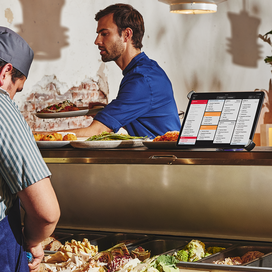Table of contents
This article is for educational purposes and does not constitute legal, financial, or tax advice. For specific advice applicable to your business, please contact a professional.
When it comes to managing the cash flow for your small business, staying on top of costs related to production is critical to adjusting your profit margins and even filing taxes properly.
Let’s say, for example, you run a candle-making business. Your starting inventory might consist of several hundred units, but as the year goes on, you incur other costs, such as freighting the candles to different states or marketing expenses. All the costs that are directly a part of your production of goods add up to your cost of goods sold. By having a clear picture of your cost of goods sold, you can forecast how much inventory you will need, inform the pricing strategy for your business, and value your inventory properly for taxes.
We spoke to four small business owners in different industries. Here is how they keep track of their cost of goods sold:
Beyond the base ingredients
“With any product base, you want to be more of a three-to-one,” said Blazing Star BBQ founder Michael Starr. “But, there are so many things that are involved with it, especially early on in a product-based business like barbecue sauces and seasonings. To get your price point down, your volume needs to be, like, a hundred thousand units of each product.”
In order to have a three-to-one ratio, if an item costs $3 for you to make, you would need to be able to sell it for $9. He adds that competitors at scale can sell their barbecue sauces for $2.70, where it may cost him $5 to make his own. Although his sauce might feature high-quality ingredients, the costs associated with making the sauce, finding co-packers that will make smaller unit amounts, and freighting the product to different places can add up.
Keeping track of and actively managing your inventory is a way to more closely manage your business’ cost of goods sold. By using an inventory management tool, you’ll have a holistic view of what inventory you have in stock and a sense of which items are selling more frequently without having to make manual updates. The information can then communicate with your point-of-sale system directly, automating a time-intensive task.
Factoring in margins as a part of the broader business
“It’s about 35% and so the margin is about 65%,” says Ice Cream Social partner Mike Weiss. He says that in the first half of the ice cream season in 2020, the company broke even on all its initial expenses in addition to the cost of goods sold, and were able to turn a small profit. “So, that’s the short answer to that question. The longer answer is there are things to consider, like licenses and regulations, which are different in every municipality.”
Read more: How Much Does a Business License Cost in Every State?
These additional costs, Weiss says, can add up. In Michigan, the ice cream distributor — not the ice cream truck — needs a license to operate, so they needed a vendor license to sell and did not incur costs for additional licenses that they may have needed in a different area.
Weiss and Roedel regularly look at business reports in their Square Dashboard to inform future business decisions. From checking sales reports for a sense of their customers’ ice cream habits and preferences to adjusting prices to accommodate for seasonality in new product offerings, relying on data related to the business’s cost of goods sold helps them better manage their cash flow.
Balancing the costs of the menu as a whole
With the rise in inflation costs and changing labor costs, Fatbacks BBQ Chief Marketing Officer Devin Osborne said cost of goods were heavily affected this year. “Typically we try to price it out where it’s not as bad, but, I mean cost of goods can range 50 to 70%, sometimes, of the actual overall product,” said Osborne, adding that the restaurant industry can be an extremely low-margin business.
To help balance out these high costs, Fatbacks BBQ focuses on quality. The restaurant uses as much of the meat it purchases as possible, and the sides — sometimes an afterthought for a barbecue restaurant — are a top priority for their business. Each one is handcrafted so that they are as much a draw as the meat.
Pricing for eCommerce
For unisex apparel maker Honor Roll Clothing, 85% of the company’s clothing is cut and sew, meaning they source and buy the fabric, a seamstress sews it, and there is a factory that does their production. “If we sell to a shop or a store to sell our products, our margins are pretty much cut anywhere from 35 to 50%, so going direct to consumer has always been something we wanted to do,” said Honor Roll Clothing co-owner and marketing manager, Chris Duncan.
When the company first started pricing their clothing, they didn’t take the cost of goods into account. “In the beginning we had no clue, we just said, ‘It takes us $9 to make a t-shirt. How much do you think people would pay for it?’” said Duncan. “People were paying $35 for it, all right, let’s make ours $30.”
Read more: What to Consider When Pricing Online vs. In-store
As the business started growing they started calculating how much money they were spending on everything from the raw materials to the costs to fulfill those orders, and settled on a profit margin somewhere between 2.5 to 4%.
“Cost of goods sold, or COGS, as they’re often referred to, are essentially the costs you incurred directly in the production of your product or service, typically marketing, sales, transportation, stuff that happens after the production — those are excluded from your cost of goods sold number. What’s included are things like the raw materials and labor costs,” says Stash Wealth CEO Priya Malani, adding that if you’re running a bakery, everything from eggs and flour to the electricity to power the oven or your chef’s hat could be a part of goods sold.
Regardless of the type of business you’re running, keeping in mind the costs contributing to your production of goods and services will help you grow your business.
![]()












